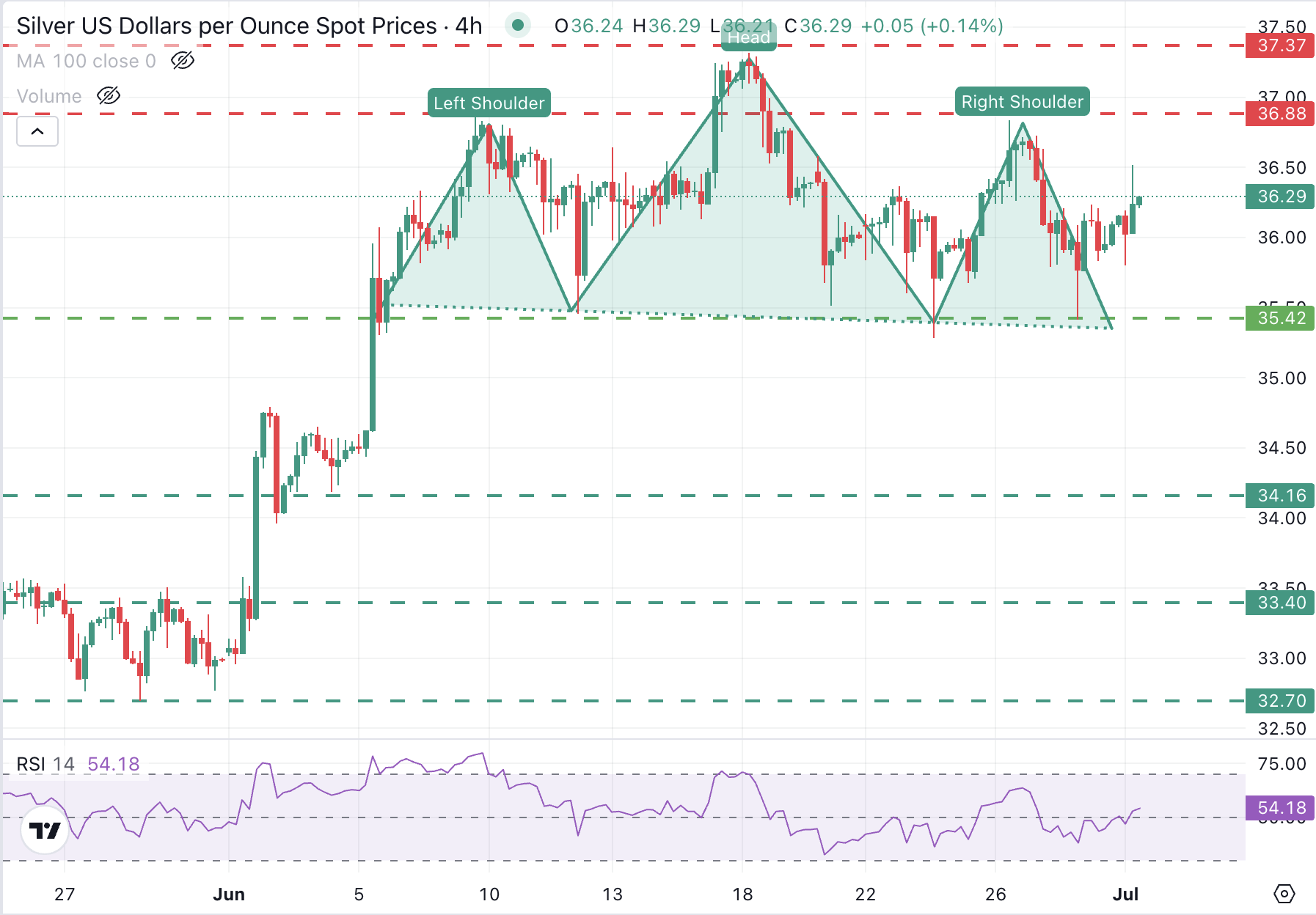- Silver attempts to break higher as demand for safe-haven assets increases on Tuesday.
- Renewed concerns about tariffs have dampened investors’ optimism
- XAG/USD shows hesitation above a key support level at $35.40.
Silver (XAG/USD) is extending its rebound from Monday’s lows at $3540 to intra-day highs at $36.50 so far, with precious metals supported by higher demand for safe havens, amid an increasingly cautious market sentiment.
Trump’s comments complaining about the lack of progress on the trade talks with Japan and Treasury Secretary Scott Bessent’s threats to introduce tariffs on July 9 despite ongoing negotiations have revived concerns about the global trade outlook and have dampened investors’ appetite for risk.
Technical Analysis: XAG/USD hesitates above a key support at $35.40

The pair attempted to break higher, favoured by the higher appetite for safe assets on Tuesday, but it is struggling to consolidate above Monday’s high at $36.25, while the 4-hour RSI wavers around the 50 level, which divides the bullish from the bearish territory.
From a wider perspective, the precious metal remains trading within the last three weeks’ range, between $35.40 and $37.35, consolidating gains after having rallied beyond 10% from Early May lows. The Doji candles on the daily chart. emphasizes the market’s hesitation at current levels,
On the downside, a break of the mentioned $35.40 level would confirm a bearish H&S pattern, a common figure to anticipate trend shifts, and increase pressure towards $34.10 (June 4 low). The figure’s measured target is at $33.43.
Silver FAQs
Silver is a precious metal highly traded among investors. It has been historically used as a store of value and a medium of exchange. Although less popular than Gold, traders may turn to Silver to diversify their investment portfolio, for its intrinsic value or as a potential hedge during high-inflation periods. Investors can buy physical Silver, in coins or in bars, or trade it through vehicles such as Exchange Traded Funds, which track its price on international markets.
Silver prices can move due to a wide range of factors. Geopolitical instability or fears of a deep recession can make Silver price escalate due to its safe-haven status, although to a lesser extent than Gold’s. As a yieldless asset, Silver tends to rise with lower interest rates. Its moves also depend on how the US Dollar (USD) behaves as the asset is priced in dollars (XAG/USD). A strong Dollar tends to keep the price of Silver at bay, whereas a weaker Dollar is likely to propel prices up. Other factors such as investment demand, mining supply – Silver is much more abundant than Gold – and recycling rates can also affect prices.
Silver is widely used in industry, particularly in sectors such as electronics or solar energy, as it has one of the highest electric conductivity of all metals – more than Copper and Gold. A surge in demand can increase prices, while a decline tends to lower them. Dynamics in the US, Chinese and Indian economies can also contribute to price swings: for the US and particularly China, their big industrial sectors use Silver in various processes; in India, consumers’ demand for the precious metal for jewellery also plays a key role in setting prices.
Silver prices tend to follow Gold’s moves. When Gold prices rise, Silver typically follows suit, as their status as safe-haven assets is similar. The Gold/Silver ratio, which shows the number of ounces of Silver needed to equal the value of one ounce of Gold, may help to determine the relative valuation between both metals. Some investors may consider a high ratio as an indicator that Silver is undervalued, or Gold is overvalued. On the contrary, a low ratio might suggest that Gold is undervalued relative to Silver.

